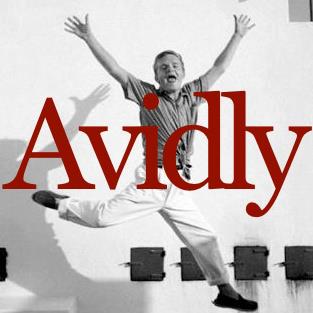I watch trains to wait on the inevitable. A machine arrives from somewhere, proceeds elsewhere, and that’s it. The script leaves little to chance but I’m riveted. Train watching requires no special skills or heroic exertions, holds out no reward system or social capital. Suspiciously passive, deviously un-goal-oriented, it can be construed as loitering or mistaken for terrorism. What I get from this hobby, if that’s the right word, is a feel for infrastructure in the flesh: the creosote whiff of wooden ties, the alloyed surf song of lathed wheels on welded rail, the loneness lingering in the wake of far-bound freight.
This spring, some of us structured our feelings by breeding yeast or raising garden beds. My daughter Mira and I drove to the Amtrak depot on the edge of town. We waited and wondered. About the tank cars brimming with crude and the hoppers heaped with scrap. About the saltwater adventures of the hatchbacks or floss spools inside the doublestack stamped “Hamburg Sud.” We talked about whatever highballed through and played guessing games of global logistics. Each train became a macroeconomic sentence, a chance to grip the chain links of human supply. We ate ruffled chips on an empty platform and saw society assemble itself.
Train watching attunes us to the ordinary. We notice the limestone jags lining the rail bed and the signal lamps flaring their codes. We learn by ear the gathunking flat spot of a misshapen gondola wheel. There’s plenty to froth the senses trackside, but precious little gives you bearing. “What’s that for?” Mira asks of some wire scrim or boxcar stenciling, her mind a gemlike flame of causal inference. Sometimes I answer. Often I can’t. Freight does not explain itself to bystanders. Patching into its grammar entails learning how to decrypt hazmat placards and read pressure limits, how to parse whistle patterns, and find where the yards are.
This knowhow calls to consciousness the built world’s bedrock by filling with loud, smelly content the parenthesis of infrastructure. Train watching is my critical method for peeking through our workaday commodity haze to glimpse what joists an economy and brackets a culture. To see in action the systems whose achievement is to remain invisible. To feel infrastructure as what the anthropologist Brian Larkin calls, “matter that enable the movement of other matter.” It’s an excuse to look up the embankment, down the culvert, out through the industrial scramble of urban outskirts for the coupling of modern life.
What have we learned from watching? That a fathomless chemical ocean sloshes across the continent. That forests of planks, pellets, and pulp are always lumbering somewhere. That the containerized etcetera of well cars carries most of what we will ever touch.
I’ve lived near tracks as long as I can remember (and given that a million miles of rail engrave the earth, chances are that you do too). Today home is Buffalo, a place founded on through-traffic. A lakeport, canal town, and rail junction, the Queen City learned long ago how to scrape a living from moving others’ stuff. Buffalo became America’s layover in 1825 when the Erie Canal drew a trickle of ocean to the midwest. Our luggage hustle spun off tributary enterprise: grain elevators to stockpile Ohio wheat and a steel plant to plate Minnesota ore. Railroads converged from all angles to carry everything, including newlyweds ticketed for Niagara Falls. One honeymoon express took the name “Phoebe Snow” after a fictional passenger who enjoyed clean linens and bad rhymes: “My gown stays white from morn till night / upon the Road of Anthracite.”
Then came rust. Buffalo’s rough and ready hub gave ground to tractor trailers and cargo jets in the twentieth century. But the gig wasn’t really up until 1957 when the St. Lawrence Seaway carved a marine bypass through Ontario. Buffalo dropped off shipping schedules, lapsing overnight from the country’s busiest inland port to a backwater. The Erie Canal became a 363-mile lazy river. Regional rails drowned beneath an alphabet soup of fallen flags: NYC, LVRR, EL, NW, NP, PRR, PC, THB, B&O. Orders evaporated. Forsaken spurs sprouted prairie. In 1979, they shuttered the art deco cathedral Central Terminal and replaced it with the milk-curdle brick shack in whose cantilevered shade Mira and I sit.
The trains we watch race across the New York Central’s “Water Level Route,” a line old enough to have carried Abraham Lincoln to his first inauguration and final rest. A bronze plaque proclaims that on this spot in 1893 the Empire State Express “reportedly attained the unprecedented speed of 112.5 MPH.” Today the tracks belong to the Rochester Subdivision of CSX, a Jacksonville conglomerate with a focus-grouped slogan: “how tomorrow moves.” After a half-century slump, the line is humming again, part of a nationwide freight resurgence attributable to deregulation, innovation, or environmentalism depending on the pundit. And we are no longer the only onlookers. With the summer warmth come a few curious others: parents corralling kids, zealous fans armed with radio scanners, loners lunching in parked cars. We watched together at a distance, elevating the everyday into event.
Amtrak arrives every few hours in stainless steel and star-spangled paint, but few are riding. One time the engine barely curtsied to discharge someone before shoving off to Toronto. Buffalo maintains decent passenger service by borrowing against its former glory. Path dependency has gifted our quarter-million citizens eight daily departures, including one-seat rides to Boston, New York, Cleveland, and Chicago. But this tax-subsidized bequest pales beside the fifty-odd freights that parade past every twenty-four hours, their cars emblazoned with proof of vaster spans: Cotton Belt, China Shipping, Norfolk Southern, Santa Fe. While I doubt that CSX hauls tomorrow, their rainbow rosters re-enact the original reason for Buffalo by gathering up places beyond us. They piece together a world we still belong to.
Dave Alff writes about the conjunction junction of public works & working publics.


